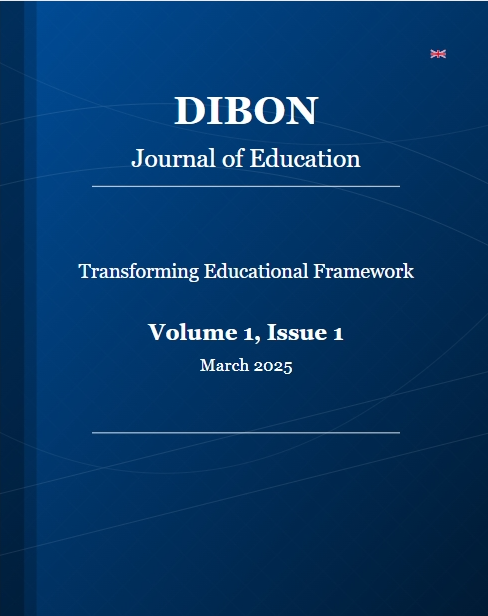Challenges Faced by the Visually Impaired Students during Online Learning: Lessons for Teachers
Keywords:
Visual Impairment, Distance Education, E-learning, Screen Readers, Online Teaching, Educational Technology, Assistive TechnologiesAbstract
The COVID-19 pandemic has changed the educational system from face-to-face learning to online learning mode. This shift had impacted visually impaired students. This study aims to understand the academic experiences of visually impaired learners and explore their challenges during online learning. The study employed a mixed-methods approach to obtain the aims. For data collection, the researcher used a questionnaire addressed to eighteen visually impaired participants (15 Impaired, three partially Impaired) pursuing various academic programs across India. The findings reveal that Google Meet (83.3%) was the most accessible platform, but students faced significant challenges, including inaccessible PDF materials, limited availability of scribes for online exams, and difficulties with visual teaching aids like PowerPoint presentations. Based on these findings, the study recommends improving web accessibility and providing materials in screen-reader-friendly formats to ensure the availability of online scribes. It suggests that teachers use more assistive technologies and create proper connectivity between educational institutions and specialized digital libraries for impaired students.
References
AbuHamdi, E., Ismail, I., Bsharat, T. (2021). Understanding quantitative and qualitative research methods: A theoretical perspective for young researchers. International Journal of Research 8(2):71-87.
Bsharat, T. R., Behak, F., & Ismail, I. A. (2023). A Guide to E-Learning: When the Entire World Was Caught in the Center of a Storm, Technology Played a Critical Role. In M. Santally, Y. Rajabalee, & R. Rajputh (Eds.), Implementing Rapid E-Learning Through Interactive Materials Development (pp. 1-10). IGI Global. https://doi.org/10.4018/978-1-6684-4940-0.ch001
Courtney L, & Keith, M. C. (2017). Systematic Review of Evidence-Based Practices for Inclusive Playground Design. Children, Youth and Environments, 27(3), 78–102. https://doi.org/10.7721/chilyoutenvi.27.3.0078
Das, U. (2023). Online Learning: Challenges and Solutions for Learners and Teachers. Management and Labour Studies, 48(2), 210-213. https://doi.org/10.1177/0258042X211069501
Horn, E. M., & Kang, J. (2012). Supporting Young Children With Multiple Disabilities: What Do We Know and What Do We Still Need To Learn?. Topics in early childhood special education, 31(4), 241–248. https://doi.org/10.1177/0271121411426487
Ismail, I. A., & Dawoud, L. K. A. (2022). Preparedness for Online Learning in the Context of Monkeypox Virus: A Literature Review. International Journal of TESOL & Education, 2(5), 14–19. https://doi.org/10.54855/ijte.22252
Makarova, T., Matveeva, E., Molchanova, M., Morozova, E., & Burenina, N. (2017). Project Work Management Addressing the needs of BVI learners of EFL. Integration of Education, 21(4), 609–622. https://doi.org/10.15507/1991-9468.089.021.201704.609-622
MHRD. (2020). National Education Policy 2020. Government of India: New Delhi.
Mokh, A. J. A., Shayeb, S. J., Badah, A., Ismail, I. A., Ahmed, Y., Dawoud, L. K. A., & Ayoub, H. E. N. (2021). Levels of Technostress Resulting from Online Learning among Language Teachers in Palestine during Covid-19 Pandemic. American Journal of Educational Research, 9(5), 243–254. https://doi.org/10.12691/education-9-5-1.
Muthuprasad, T., Aiswarya, S., Aditya, K., & Jha, G. K. (2021). Students’ perception and preference for online education in India during COVID -19 pandemic. Social Sciences & Humanities Open, 3(1), 100101. https://doi.org/10.1016/j.ssaho.2020.100101
Palan, R. (2020). “I seriously wanted to opt for science, but they said no”: visual impairment and higher education in India. Disability & Society, 36(2), 202–225. https://doi.org/10.1080/09687599.2020.1739624
Ravichandran, G., Sujathamalini, J., & Gunasekaran, K. (2022). E-Learning- Accessibility of Students with Visual Impairment in Higher Education. International Journal of Research and Review, 9(5), 27–31. https://doi.org/10.52403/ijrr.20220506
Sharma, S., Dureja, S., Saini, D., Jose, R., Pant, R., & Singh, A. (2025). Empowering impaired learners: Technological advancements in higher education. Technology and Disability, 2025;0(0). https://doi.org/10.1177/10554181251313711
Downloads
Published
How to Cite
Issue
Section
License
Copyright (c) 2025 Prem Guddad

This work is licensed under a Creative Commons Attribution 4.0 International License.


